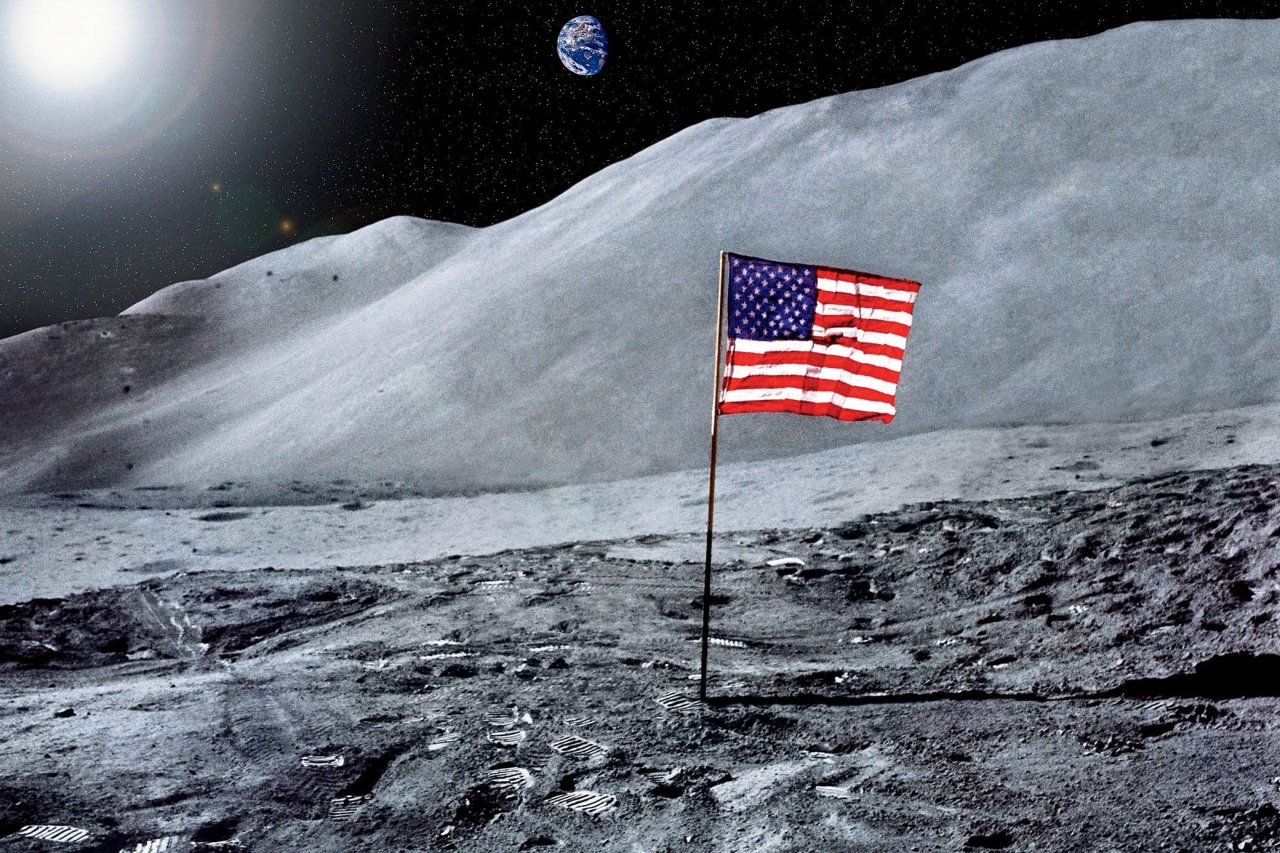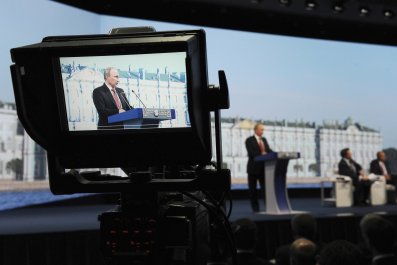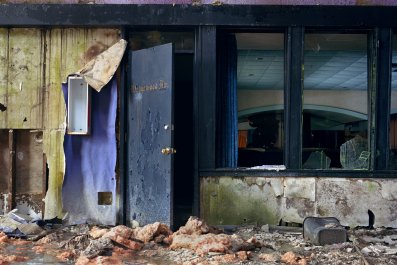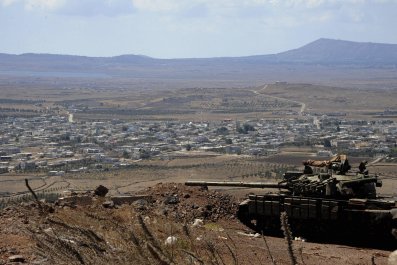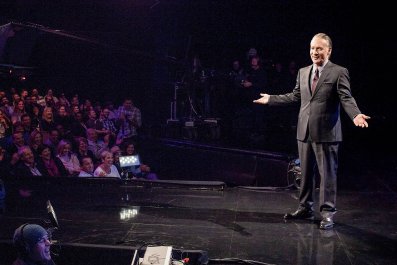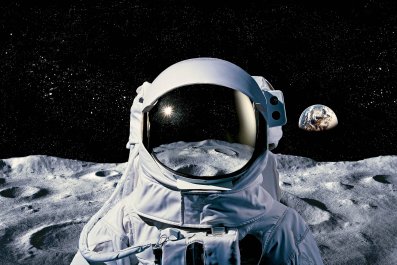Wrestling with the huge steering wheel, a CIA agent carefully backed the large flatbed truck through an entrance in the 10-foot wooden fence surrounding a salvage yard. As the truck rumbled to a stop, covert intelligence operatives, moving quickly under cover of night, pushed the gate closed, barely clearing the front bumper. They then all rushed to the back of the truck, hopped inside and delicately pried open the giant wooden crate it carried, being careful to leave no marks.
With that, the first stage of their secret mission was complete: US intelligence had stolen – or, more accurately, borrowed – one of the Soviet Union's most important technologies, a Lunik space vehicle, a key component in the Soviet Union's race with the US to be the first to reach the moon.
The "kidnapping" of that missile – done without the Soviets ever knowing about it – is one of many wild, and sometimes weird, secret operations and schemes exposed for the first time in a series of recently declassified government documents concerning the so-called Space Race. This is not the stirring tale of macho crew cuts and heroic deeds from The Right Stuff that is now a fat chapter in every US high school history book. This is a tale replete with fumbling, bumbling, bickering and at least one insane-sounding notion: to nuke the moon.
The polished-smooth history of America's successful effort to land a man on the moon starts with President John F Kennedy announcing in 1961 his plan to send a manned mission there by the end of the decade and culminates eight years later with Neil Armstrong stepping out of a lunar landing module and declaring that he was taking a small step for man, but a giant one for mankind. Instead, the just-released documents from the 1950s and '60s, many of which were obtained by the National Security Archive at George Washington University, describe a much messier, and sometimes quite frightening, story about what was arguably the most important international competition in human history.
Many of the plans prepared by the American military focused on how the moon could be used for warfare. Designs were drawn up for building nuclear reactors there, although no one seems to have given much thought to where in the vacuum of space the resulting radioactive waste would be disposed. Detailed studies recommended that the US detonate a nuclear weapon near or on the moon, partly in hopes of setting off a "moonquake" and partly to scare the crap out of the Russians.
The reasons for frantic scheming on both sides of the Cold War were not just the altruistic advancement of science and a chance to feed national pride. Both countries wanted to get to the moon first because they thought it would give them military superiority in their long, bitter and costly Cold War. "The results of failure to first place man on extraterrestrial, naturally-occurring real estate, will raise grave political questions and at the same time lower United States prestige and influence," reads one 1959 Army document about a secret programme called Project Horizon. "[Moreover], the extent to which future operations might be conducted in space . . . is of such a magnitude as to almost defy the imagination . . . the interactions of space and terrestrial war are so great as to generate radically new concepts."

Caught With Their Rockets Down
The declassified documents show that American concern about one country achieving dominance on the moon or in space got serious just after the Second World War, with the capture of German V2 rockets, known as the "vengeance weapon". While that liquid propellant rocket was a ballistic missile not intended to reach space, its ability to shoot 50 miles into the air (about two-thirds of the way to the earth's atmosphere) raised the tantalising and terrifying prospect that this weapon, used by the Nazis to bomb Britain, might hold the secret to putting man into space.
In 1948, two US military groups were charged with developing systems for rocket-based exploration of the upper atmosphere: the Air Force Cambridge Research Center and the Naval Research Laboratory. Unfortunately, as an analysis by the CIA later found, the two organisations fell prey to the type of inter-branch rivalry that has undermined so many military research efforts. "A considerable amount of tension existed between [the Air Force and the Navy],'' the 1984 analysis says. "An unhealthy rivalry sapped the total US effort."
Meanwhile, the Soviets – equally aware of the Nazi rockets – pushed ahead with their own deep-space programme using replicas of the V-2 and SS-6 intercontinental ballistic missile. By the late 1950s, the Soviets were launching the missiles – with the Lunik stage on top – from Siberia; many of the initial attempts flopped, primarily because of failures to launch.
On October 4th 1957, officials from the United States and the Soviet Union met at the National Academy of Sciences in Washington DC as part of an international effort to cooperate in some areas of space exploration. The Americans, led by chief delegate Richard Porter, relentlessly pushed their Russian counterparts for information about their satellite programme. When, they asked, would there be an official launch date for any such space vehicles? But no matter how many times (and how aggressively) the Americans asked – "almost to the point of embarrassment" one document says – the Soviets refused to answer.
Porter left the meeting frustrated . . . and a little smug. He was now confident that American intelligence was correct: the Russians were far behind the US. Clearly, that was why they were reluctant to name a launch date. But that evening, Porter and other members of the US delegation attended a party at the Soviet embassy. In the middle of the festivities, he was called to the phone. On the line, an American official told him Sputnik 1, the Earth's first satellite, had been launched into space. The intercepted 40-megahertz signal was played for Porter over the phone. Those beeps being broadcast by Sputnik meant the US was far behind in the race to reach the moon.
Around 1959, US intelligence developed what seemed like a useful technology: equipment that could tamper with the electronics of orbiting satellites; theoretically, such a device could even be used to take control of an orbiting object. The equipment was tested, but just before somebody pointed it at a Soviet satellite, intelligence officers contacted a consultant with the National Security Agency to hear his thoughts. He shot the plan down quickly, said the idea was a very, very bad one. By using the equipment, he argued, America would be setting the precedent that it was acceptable for countries to tamper with each other's satellites, and if everyone started doing it, nobody would be able to use satellites at all. The equipment was disabled to ensure that no one would ever use it, even by accident.
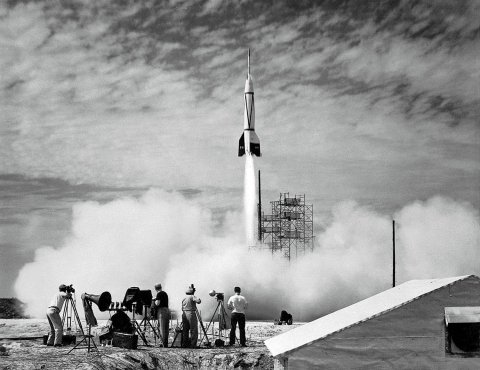
The Original Star Wars
The US military was by far the strongest advocate for getting on the moon first, and not for any political purpose. Instead, it saw the moon as the ultimate prize in the coming race to get wapons into space.
One of the most outlandish secret schemes was Project Horizon, a plan to establish a lunar military outpost. The reasons included protecting American interests on the moon (some strategists believed the first nation to land on the moon would be able to claim it as a possession); developing military surveillance of Earth and space; building electronic relays that would be beamed from Earth to the moon and back again for communications over vast distances; and, of course, for military operations.
Building this lunar base, Army analysts concluded, would be one of the greatest and most important efforts in US history, comparable to the development of the atomic bomb.
"The establishment of the outpost should be a special project having authority and priority similar to the Manhattan Project in World War II,'' a 1959 army study said. "Once established . . . space, or certainly that portion of outer space encompassing the Earth and the moon, will be considered a military theatre."
Using Saturn rockets, the US Army planned to launch 74 missions by the end of 1964. Some of those ships would be docked at an orbital space station partway to the moon, and then sent farther on their way. By January 1965, the first cargo ships carrying the material necessary to build this vast station would begin to land on the lunar surface, followed three months later by the first manned landing by two men. Building would begin immediately, with the base completed and ready for occupancy by 12 members of the military in November 1966. The Army estimated the cost for the project – launchings, materials, building – would be $6bn. Suffice to say, the base was never built.

Nuking The Moon
The same year the Army was proposing its lunar base, the Air Force was going even further: it wanted to nuke the moon.
Analysts at the Air Force Special Weapons Center in New Mexico proposed setting off a nuclear explosion either on or near the moon. One reason to set off a lunar bomb, the study says, was to trigger "moonquakes" they could study. "Seismic observations on the moon are of great potential interest from the viewpoint of fundamental theories of the development of the solar system and of the moon itself. A large explosion would help ensure success of a first seismic experiment."
Another reason for shooting the moon? To prove to the world that America could do it. "Specific positive effects would accrue to the nation first performing such a feat as a demonstration of advanced technological capability,'' the report said. Of course, it added, there could be considerable negative reaction around the world to the United States setting off a nuke on or near the lunar surface "unless the climate of world opinion were well-prepared".
While the US was involved in these mushroom-cloud-in-the-sky schemes, the Soviets were developing plans that made more sense. Just over a year after the US proposals for moon bases and bombs were completed, in October 1960, American intelligence detected the launch of two space vehicles by the Soviets that officials calculated were the heaviest objects ever shot into space. An early intercept of data by the Americans provided enough information to establish that this was a parallel stage rocket, with four large boosters attached to the sides, rather than the usual method of having the thrusters at the bottom of the craft. Almost immediately, the Americans could tell this was something quite unusual.
Intelligence analysts jumped on the telemetry information, examined the launch windows and assessed directions and speeds. After a short while, they realised the Soviets were trying to get to Mars. That effort failed, but a few months later, the Soviets took a shot at Venus. On their second try, they got a satellite into Earth's orbit and, after it had almost travelled around the world once, a booster shot off and propelled it on a path to Venus. This was the first time anyone had used the Earth's gravitational pull almost as a slingshot, and the technique was quickly adopted by the US, allowing for rockets to be accelerated and ecelerated through the use of gravity rather than through relying on heavy propellant – thus allowing for them to go farther without adding weight.
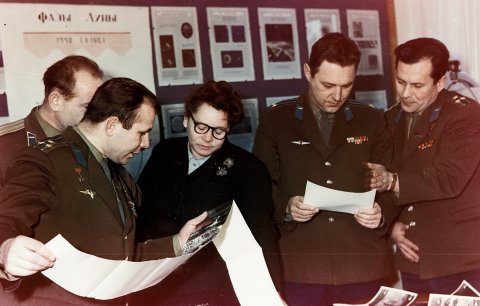
Operation Pocketed Rocket
America bungled many legs of the space race in the early 1960s with bad planning, hare-brained schemes and inept spying, but the CIA scored one of its greatest coups when it snatched a Russian Lunik missile out from under Soviet guards without being detected. The trove of secret information gleaned from that vehicle allowed American space officials to know the abilities and limits of Russian spacecraft, then pilfer what worked. And the CIA was only able to pull this operation off because the Soviets couldn't resist showing off.
The agency learned that the Russians were doing a tour to exhibit their industrial and economic accomplishments with displays of machinery, power stations and nuclear equipment. There were rumours that models of Sputnik and Lunik space vehicles would be included in the show.
The Lunik was a series of robotic spacecraft sent to the moon from 1959 through 1976. They were designed to either orbit or land on the moon, and 15 of the attempts were successful. However, at the time of this CIA operation, only three Luniks had been launched – the first missed the moon and fell into an orbit around the sun, the second successfully hit the lunar surface, and the third flew around the moon to its never-before-seen dark side, and transmitted photographs of it back to Earth.
That was far better than what the US was doing, and the Americans desperately wanted to sneak a peek at Russia's technology. The travelling exhibition seemed to offer the perfect opportunity to "look under the hood" without the Soviets knowing.
But after further discussion, someone pointed out that the Russians would never be so reckless as to transport a working version of the missile from country to country. They'd just use a model, right?
The CIA figured it wouldn't hurt to check, so, as the exhibition trundled from one city to the next, they snatched its shipping manifest and, among the items listed, was something called "models of astronomic apparatus". The dimensions of this whatever-it-was seemed to match those of the Lunik. The CIA station closest to the next city where the trade fair was scheduled to be held was told to figure out a way to take a look at the equipment and – if it was the Lunik – gather every scrap of information about it that they could.
Agents determined that it would be impossible to get their hands on the equipment at the exhibition, because guards were on duty 24 hours a day. That meant the only time when the Lunik wasn't under constant surveillance was when it was on the move, being shipped from one city to the next.
The transport was done by truck and then by rail. US agents wanted to bribe some locals, sneak aboard the train and move the freight car carrying the Lunik on to a railway siding and into a warehouse, where they could study it overnight. But they had no local assets connected to the railway who could be relied upon for such a complex undertaking. That left the truck.
The day of the operation, the Soviets loaded the Lunik into a large crate – one that had already been photographed many times by US agents – that was then placed on a flatbed truck, so it could be hauled to the train station. US agents, working with some locals, arranged for that truck to be the last one in the convoy leaving the exhibit grounds. They also got "friendly" with the driver, and made sure they had his full cooperation.
Meanwhile, that night, agents at the train station watched carefully as a Soviet guard checked each item from the exhibit. They determined that the man had no means of communicating with his colleagues back at the exhibition. As the truck left the fairgrounds, operatives monitored it constantly, and once they were sure the Soviets were no longer watching the truck, they diverted it to a turn-off, threw a canvas over the huge box on the flatbed, and escorted the truck driver to a nearby hotel, where he was kept for the night. A new driver – one who worked for the agency – jumped behind the wheel, and drove the truck to a salvage yard the agency had rented for the night. There, the operatives got a call that told they were in the clear: their man at the railway yard reported that the Soviet checker at the station had apparently assumed the Lunik truck was just late, so he had packed up and gone home. That meant no one knew the Lunik was missing, and no one would be looking for it until the morning.
The agents swarmed on to the back of the truck. Two members of the team carefully removed the lid of the crate, making sure they left no markings that would indicate it had been opened. As they were carefully prying up planks, suddenly lights went on all around them. For a moment, they thought they were being ambushed, but they soon realised that the salvage yard lamps went on every night at that time.
Once they had the crate open, they dropped a ladder down and climbed in. There, they began taking photographs of every detail, from one end of the Lunik to the other. They removed a window and climbed inside, clicking their cameras as the went. At one point, they realised that, to gain access to part of the missile, they would have to remove a seal made of plastic, a stamp and a wire. They hastily called the nearby CIA station, where personnel there assured them that they could duplicate all that. And so the seal was broken . . . and painstakingly resealed many hours later. They'd unwrapped the Christmas present, got their gift, and then put all the paper and ribbons and bows back the way they were.
By 4am, the job was finished and all the equipment was packed up. A car pulled up, the operative scrambled inside and they were driven away. The man who had backed the truck into the salvage yard climbed back into the cab and, at 5am, dropped the truck off at a prearranged point. There, the original driver took over and delivered the truck to the rail yard. Not long after, the same Soviet guard who had been checking items as they were hauled into the rail yard the night before showed up for work. He signed off on the truck with the Lunik on board, and the crate was loaded onto the train and taken to the next exhibit site.
There was no sign the Russians ever knew about the kidnap, a great success for the CIA, and one still being proudly held up to new recruits to the agency in 1969 as Neil Armstrong was about to become the first man to walk on the moon.



